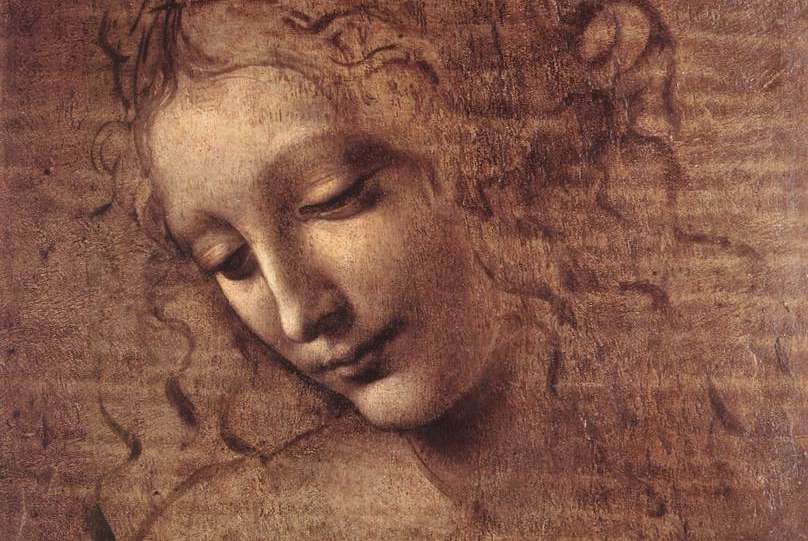Share This Article
By Evan Mantyk, president of the Society of Classical Poets and a high school English teacher in Upstate New York.
A Quick Sonnet Guide.
A traditional sonnet should have…
- 14 lines.
X
- Rhyming. The most common is the Shakespearean rhyme scheme: ABAB CDCD EFEF GG. These 14 letters represent the sonnet’s 14 lines and the same letter means those lines rhyme with each other. The more difficult Petrarchan sonnet rhyme scheme is ABBA ABBA CDE CDE, though there are many varieties of how to organize the scheme in those last six lines.
X - Meter. Most commonly iambic pentameter. Beginners may count out 10 syllables per line. Real iambic pentameter means five unstressed-stressed units (dah DUM dah DUM dah DUM dah DUM dah DUM): “shall I comPARE thee TO a SUMmer’s DAY?” Each unit may be two syllables, but not always, (“it BRILliantly SOARED” could be counted as two iambs). More on meter below or here.
X - A subject and a turn (“volta”). Most commonly a sonnet will have a focused subject that is explored in the first eight lines, then in the next six lines there will be a shift or turn (“volta”) in the poem that sheds new light on the subject or shifts perspective in some fashion. In Shakespeare’s famous “Sonnet 18” someone’s beauty is compared to a summer’s day in the first eight lines and then in the next six lines the poem shifts to the immortality granted to beauty by the power of poetry.
X
For more examples you may also explore 31 Sonnets: Renaissance to New Millennial, which includes sonnets from long ago to the present. The Society of Classical Poets also regularly publishes traditional sonnets by leading poets (and sometimes high school students too). Submit your sonnet for publication to [email protected].
An In-Depth Sonnet Guide.
Writing a Sonnet: Easy to Hard
Put simply, a sonnet is a 14-line poem. You might write one for any number of reasons: a class assignment, a birthday present, or visions of poetic paradise and posterity. Let’s begin. I’ll take you through a simple guide that can lead to a basic sonnet in 10 minutes at the easy level to one that demonstrates literary mastery at the difficult level.
Level 1: Easy: A Sonnet in 10 Minutes
Poetry, at its best, is about those great lofty and universal themes like beauty, the meaning of life, and compassion for our fellow human beings. But, it can also be humorous, unimportant, and topical. The genius of poetry is partially in the ability to convey a lot in a few words and make those few word catchy and attractive to your audience. To write a quick sonnet, we need something specific to focus on. A person, a painting, a book, a character, an event, a place, a relationship between two things, and so on. Can’t find a topic? Just look for a picture or poster you like. Here’s a painting that I had as my desktop background for a while:
Now, whatever your topic is, imagine it is real. You are in front of it or in it. What are you feeling? Use your five senses and a sprinkle of imagination. Compare what you are thinking of to something (“the water was clear like crystal”; “the water was crystal” or better yet “the crystalline water”). You can also repeat words and phrases for emphasis (“What a beautiful morning… What a gorgeous sea…”).
Let the writing begin. Try to limit yourself to lines that are not more than half the page (with 12 point font, on a standard word processing page) and try to mostly end your sentences or thoughts where a line ends. It doesn’t have to be one line per thought; you could have a thought that is four lines, but try to wrap it up by the end of that fourth line, not in the middle of it. Capitalization of the first letter of each line and standard punctuation are optional.
Here we go:
On William Bradford’s “Sunrise on the Bay of Fundy”
The waves are bumpy and the wind blows hard,
But the sunrise is so beautiful to look at,
I could sit and look at it forever;
I feel like a new day is beginning and everything is going
To be okay, especially because there is
This guy there for me to talk to.
Why do people, like me, like to look at the water so much;
Why not just look at the land all the time?
There is something special about the water.
Maybe it’s the clear horizon line, like a desert.
It makes you feel big and opened up to the sky.
Openness makes you feel cleansed,
Pure, like the garbage cans been emptied,
And powerful, like you could go anywhere.
Done! You have written a sonnet in free verse. Check the timer.
Level 2: Medium: Rhyme-y Poetry
Many people will say that poetry isn’t poetry if it doesn’t rhyme. Traditionally speaking, this is generally true of short poems like sonnets. Sonnet, after all, means “little song” in Italian, and song lyrics, as we know, usually rhyme.
If you aren’t naturally good at rhyming, there are plenty of sources of rhyme words online, such as Rhyme Desk or Rhymezone.com. If you can’t find a rhyme for your word, the tactic is usually to swap your original word with a different one that has the same meaning. For this, I recommend Merriam-Webster’s Thesaurus. Or, even rewrite the first line and first rhyme entirely in order to achieve the second line and/or rhyme you want. The rhyming poet must be flexible and agile.
Partial rhymes can also work. For example, the famously difficult rhyme word, orange, can be half rhymed with forage, storage, grange, strange, angel etc. You can also use alliterative rhymes that focus on the beginning of the word. For orange, you might use oratory, orangutan, ordinary, Orion. Here’s a poem written on the spot:
The Orange Poem
I listened to the oratory
On the topic of the color orange
At first I thought the topic ordinary
Someone said “red and yellow make orange”
But then it got a bit more strange
He said, “A one-hundred-color range
Forms the continuum of orange.”
Ready to rhyme? Next step is your rhyme scheme. If you are a beginner, it is easiest to just rhyme the lines as you go. Lines 1 and 2 end with the first rhyming pair (or couplet); lines 3 or 4 form the next rhyming pair and so on. If you continue this way to the end, the rhyme scheme of your sonnet is expressed this way:
aa bb cc dd ee ff gg
To make it more clear, here is a poem I made up on the spot with an aabba rhyme scheme:
I saw a great big dog (a)
Standing on top of a log (a)
I ran away (b)
But then it came my way (b)
And said, “May I join your jog?” (a)
The rhyme scheme used by William Shakespeare in the early 1600s was a bit more complicated. This is the typical rhyme scheme for a Shakespearean sonnet:
abab cdcd efef gg
Another classic and more difficult form is that used by the Italian poet Petrach in the 1300s:
abbaabba cdcdcd
or
abbaabba cdecde
Now, let’s return to the first two lines of our example poem on William Bradford’s painting. These are the current lines without rhyme:
The waves are bumpy and the wind blows hard
But the sunrise is so beautiful to look at
We’ll try for the easiest type of rhyming in which each line rhymes with the next one. After a little shifting and head scratching, we get this:
The waves are bumpy and the hard wind blows
But the beauty of the sunrise shows
Continue doing this for each line and you have a rhyming sonnet that looks more traditional than a free verse sonnet. The problem with the free verse sonnet is that people may not see any difference between your poem and ordinary writing, or prose. Rhyming solves this problem quite well.
Level 3: Medium-Difficult: Poetry with Rhyme and Structure
If you want to produce a sonnet with greater elegance and discipline that connects with the thousands of years of poets more fully then you should consider a rhyme scheme that isn’t necessarily so simple. You might use a Shakespearean or Petrarchan rhyme scheme, as described above, or some modification thereof.
Additionally, traditional or classical poets usually adhere to more rigid structure than is found in the easy-level free verse poem. In classical Chinese poetry, for example, each line has the same number of characters. In classical French poetry, poets count the syllables. The classical Greek and English poets depend on the number and placement of stresses. In most classical cultures, these structures create a kind of universal order, so that any missing word or stress upsets the entire order. Additionally, the sonnet itself matches other sonnets, not only in the number of lines, but the inner structure that has been used in sonnets for hundreds of years. Using a classical model leaves a well-structured poem resonating both backward and forward in history in ways that a free verse sonnet cannot. This is magnificent! Yet, also difficult.
For English poetry, the easiest way to provide some clear structure is by counting syllables, creating what is known as syllabic verse. Not sure how many syllables a word has? Visit Merriam-Webster’s Dictionary or Dictionary.com to see clearly how many syllables a word has. Rhyme Desk has a neat feature that counts as you write. Often you can also remove syllables, change “mirror” to “mirr’r,” or add syllables people don’t normally pronounce “poém” (pronounced “poh-em”). It does not have to be perfect. Although it should tend toward perfection. Sonnets usually have about 10 syllables per line (with meter, which we’ll discuss later, this is called iambic pentameter).
Here we go. Our original free verse sonnet is revised to include a Shakespearean sonnet rhyme scheme and 10 syllables per line. (Capitalization of the first letter of each line and standard punctuation should be included for this level.):
On William Bradford’s “Sunrise on the Bay of Fundy”
Steady currents of wind blow my face,
Steady currents of water rock my feet,
As the sun rises in its brilliant grace,
The raucous world seems so smooth and so sweet.
Our small vessel has not yet raised its sail,
My shipmate and I contemplate the day,
And what our minor journey will entail,
Nothing so important to again say.
And yet the immensity of the dawn,
Accentuated by vast horizon,
Is like a giant knot that’s been undone,
And releases each trespass and treason.
Larger and better ships may sail around,
Yet the expanse of my heart knows no bound.
Level 4: Difficult: Sonnet in Iambic Pentameter, Careful Attention to Meaning
More difficult and rewarding than counting syllables is looking at the meter. The meter is the use of stressed and unstressed syllables to create structure. The iamb is the most standard and natural unit in the English language. It is comprised of an unstressed syllable followed by a stressed syllable. Iambic pentameter is the traditional meter for a sonnet, and English poetry in general. You can feel the rhythm of a poem more clearly when it’s composed with meter rather than with syllable counting. For iambic pentameter, the rhythm should feel something like “dah-DUM, dah-DUM, dah-DUM, dah-DUM, dah-DUM.” Here are some examples:
One iamb: I am
Four iambs: I am a man and nothing more.
Five iambs (iambic pentameter): I am a man who tries and nothing more
For reference, the opposite of an iamb is trochee, which is a stressed syllable followed by an an unstressed syllable:
One trochee: Nothing
Four trochees: Nothing good can come from lying
Note that a hard or soft stress sometimes does not correspond to a single syllable and this is perfectly normal. For example, you could write: “I am a captain and nothing more.” There are two syllables after “cap” that form the soft stress and this is still considered a line of four iambs (or iambic tetrameter). Thus, a real line of iambic pentameter (such as the eleven syllables in “To be or not to be: that is the question”) will often not have exactly ten syllables. Of course if you use too many deviations then you risk losing the rhythm of the meter.
Also important is the meaning behind the words. The sonnet is generally broken up into the first eight lines (the octave) and then the following six lines (the sestet) with the turn (or volta) in between. In other words, the octave sets up an idea, establishing it fully, and then something changes or something different happens with that idea in those last six lines. It is a small journey. Particularly if we look at the Shakespearean sonnet, the sestet could be further broken up into four lines (quatrain) and a concluding two lines (couplet). In this pattern, our fourteen-line sonnet has three distinct sections, going from eight lines to four lines to two lines. Each section is divided by a factor of two and the second and third sections act to continuously distill the idea of the poet down to its very essence. From this perspective, every single word and phrase needs to be carefully thought over and chosen. Here, there can be no filler words or “yeah I just put that there because it rhymes.” Every letter and comma needs to be working toward the idea and painting it with the clearest colors and most accurate perspective and proportion. Here is the final incarnation of our sonnet Bradford’s painting:
On William Bradford’s “Sunrise on the Bay of Fundy”
A firm wind slaps me on my boat and face,
Waves rolling try to knock me off my feet,
And yet the world is lit with rising grace,
Which makes my roughshod life seem soft and sweet.
Our ship has not yet raised its measly sail,
My mate and I have much hard work ahead,
And yet, how calmly forward blows the gale
That lifts my soul to where the angels tread,
To where our hearts and minds are freed and cleansed,
Expanded by the wide horizon line,
To where the softest clouds above ascend
Into a color free from Earth’s confines,
Beyond the mighty ships that gather round,
Beyond my flesh, which to the sea is bound.
Here are the first four lines with the hard stresses in the iambic pentameter highlighted:
a firm wind slaps me on my boat and face,
Waves rolling try to tip me off my feet,
And yet the world is lit with rising grace,
Which makes my roughshod life seem soft and sweet.
Level 5: So Difficult It’s Easy: The Soundless Sonnet
The ancient Greek philosopher Plato explained that all poetry is a deviation from reality. I have written a sonnet about a guy on a boat. The reality is the boat itself, and the poem is an imperfect and pointless attempt to capture reality. Or perhaps, as Plato suggested, the boat itself is also a deviation from the real boat in the heavens. That means the poem is even further from reality: a deviation from a deviation. The poem is from its first attempt a worse failure than simply getting off your butt and going sailing.
Yet, giving up all art forms is not what I think Plato was getting at. He did support works of art that celebrated the gods and great men. The driving force behind a poem should serve a greater purpose beyond ourselves: something great or divine in nature or purpose. It could be as simple as a birthday gift or a note on a yearbook or as lofty as helping humanity. If there is nothing behind the poem other than our own self-absorbed drive to write poetry and become famous, show off, or feel accomplished, then the poem is, at its very best, unwritten. This is the soundless sonnet, both difficult and easy—which I think Plato hoped he saw more of (meaning, he saw less selfish poetry). This level really works in oscillation with Level 4. Ultimately, it means knowing the right time to write, knowing the lofty and meaningful goals of poetry, and knowing when not to write.
The ancient Code of Samurai, or Bushido, offers some insight on this:
Now then, when it comes to the study of poetry, in accord with Japanese custom there have been famous generals and valiant knights throughout history who have mastered the art of composing poetry. So even if you are a warrior in minor rank, it is desirable to take an interest in poetry and even be able to compose the occasional verse.
Even so, if you cast everything else aside to concentrate solely on poetry, before you know it your heart and your face soften, and you get to look like an aristocratic samurai, losing the manner of a warrior. In particular, if you become too fond of this modern fashion of haikai, then even in the assemblies of reserved colleagues you may tend to come forth with puns, bon mots, and clever lines. It may be amusing at the time, but it is something to be avoided by someone who is a warrior. (Translation by Thomas Cleary)
If we accept the metaphor that life is a battle or war, and we are the warriors, then I think the point here is clear. In my understanding, poetry can never be primary, but only secondary, in the grand scheme of life and the universe. We should continue writing poetry with selfless goals, but know that the greatest poetry has no human words at all.



